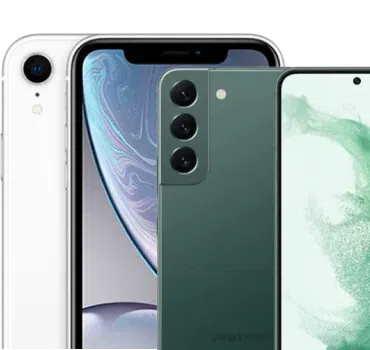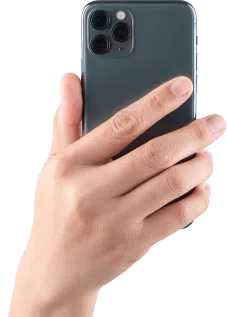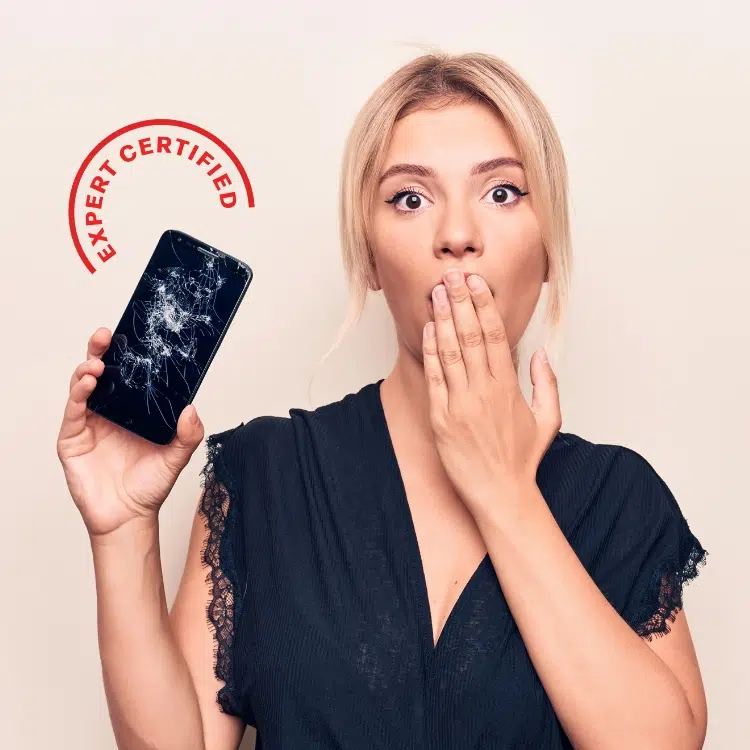
Upgrading to a new iPhone is exciting, but the thought of transferring all your data—photos, apps, settings, and more—can take the thrill out of it. Thankfully, Apple provides several user-friendly methods to help you transfer everything efficiently. Whether you’re setting up a new iPhone straight out of the box or switching after some initial use, this guide covers all the ways to move your data seamlessly.
From wireless transfers using iCloud or Quick Start to wired options with your Mac or PC, you’ll find step-by-step instructions tailored to your preferences. If you’re planning to upgrade, consider a more sustainable option by exploring Mobile Klinik’s refurbished iPhones for a high-quality device at a great price.
Transferring Data Using iCloud
One of the most convenient ways to transfer data is through iCloud, Apple’s cloud-based backup and restore service. This method is entirely wireless, making it a great option for users who prefer simplicity.
The first step in transferring data using iCloud is to back up your old iPhone. This ensures all your photos, apps, and settings are stored securely in the cloud, ready to be restored to your new device. Here’s how to create an iCloud backup:
- Open the Settings app on your old iPhone.
- Tap your name at the top of the screen and navigate to iCloud > iCloud Backup.
- If iCloud Backup isn’t already enabled, toggle it on.
- Tap Back Up Now to create a current backup of your data.
- Ensure your iPhone is connected to Wi-Fi and that your iCloud account has enough storage to accommodate the backup.
Once your backup is complete, setting up your new iPhone becomes straightforward. During the setup process, you’ll be prompted to restore from an iCloud backup. Simply log in with your Apple ID, select the most recent backup, and the transfer will begin automatically. Everything from your photos and contacts to app data and settings will be restored to the new device.
If you encounter issues like slow speeds or insufficient storage, check that both devices are connected to a strong Wi-Fi network. You may also want to temporarily upgrade your iCloud storage plan if the size of your backup exceeds your current allowance.
Using Quick Start for Fast Wireless Transfer
For those who want a faster, wireless solution without relying on iCloud, Apple’s Quick Start feature is an excellent choice. This tool works by placing your old and new iPhones near each other, using Bluetooth and Wi-Fi to transfer data directly.
Using Quick Start is one of the easiest ways to transfer data between iPhones. The process is entirely wireless and requires only that the two devices are near each other. Here’s how to get started:
- Turn on your new iPhone and place it close to your old one.
- Wait for the Quick Start screen to appear on your old device.
- Tap Continue on the old iPhone and follow the on-screen instructions.
- Use the camera on your old iPhone to scan the animation displayed on your new iPhone. This step pairs the devices and begins the transfer process.
Once the devices are connected, you can transfer all your data or select specific items to move. Depending on how much data you’re transferring, the process can take anywhere from a few minutes to an hour. To avoid interruptions, keep both devices nearby and connected to power throughout the transfer.
Quick Start is ideal for most users, but it may not be the best choice for large data transfers or if one of the devices has a weak internet connection. In such cases, consider using a wired transfer with a Mac or PC for better reliability.
Save up to 50% on a new phone!
Save big when you shop our selection of Certified Pre-Owned phones. 64-point inspection and a limited lifetime warranty for eligible customers*.
Shop now
Transferring Data Using a Mac or PC
If you prefer a more hands-on approach or need to transfer large amounts of data, using a computer is an excellent alternative. This method allows you to create a local backup of your old iPhone and restore it to your new one without relying on internet speeds or iCloud storage.
For Mac Users with macOS Catalina or Later:
- Connect your old iPhone to your Mac using a Lightning cable.
- Open Finder and select your iPhone under the Locations section.
- Click Back Up Now to create a local backup of your data on the Mac.
- Once the backup is complete, disconnect your old iPhone and connect your new one.
- Select the new iPhone in Finder and click Restore Backup.
- Choose the most recent backup file and wait for the transfer to finish.
For Windows Users or macOS Versions with iTunes:
- Open iTunes and connect your old iPhone.
- Click Back Up Now to save a backup of your device locally.
- Disconnect the old iPhone and connect your new one.
- In iTunes, select Restore Backup, choose the appropriate backup, and let the transfer complete.
This method gives you full control over your data without depending on cloud storage. However, ensure your Mac, PC, or iTunes runs the latest software version to avoid compatibility issues during the transfer process.
Transferring Apps and Data After Setup
If you’ve already set up your new iPhone without transferring data, don’t worry—it’s still possible to move everything over. Apple provides options for syncing apps, photos, and more, even after the initial setup process.
Enable iCloud Syncing
- Open the Settings app on your new iPhone.
- Tap your name at the top and go to iCloud.
- Toggle on syncing for specific data categories, such as Photos, Contacts, or Calendar Events.
This will automatically sync your data from iCloud to your new device, ensuring that essential information is updated.
Re-download Apps and Media from the App Store
- Open the App Store on your new iPhone.
- Tap your profile picture in the top-right corner and select Purchased.
- Browse the list of apps linked to your Apple ID and download the ones you want on your new device.
For apps that rely on cloud-based storage, like Google Drive or Dropbox, simply log into the app with your account credentials to access your files.
Keep in mind that app-specific data, such as game progress or custom settings, might require additional steps. Many apps allow you to restore this data via their own cloud services, so check the app’s settings for backup and restore options.
Using AirDrop to Share Specific Data
For quick, file-specific transfers, AirDrop is a handy feature that lets you instantly share photos, videos, contacts, and more between iPhones. It’s fast, easy, and doesn’t require any cables or internet connection.
How to Use AirDrop
- Enable AirDrop on Both Devices:
- Open the Control Center by swiping down from the top-right corner of the screen.
- Tap the AirDrop button and set it to Contacts Only or Everyone, depending on your preference.
- Select Files to Share:
- On your old iPhone, locate the file, photo, or contact you want to transfer.
- Tap the Share icon (a box with an upward arrow) and select your new iPhone from the AirDrop menu.
- Accept the Transfer:
- On your new iPhone, tap Accept when the AirDrop notification appears.
- The file will transfer over Bluetooth and Wi-Fi, appearing instantly on your new device.
AirDrop is ideal for sharing individual files quickly but isn’t suitable for transferring large amounts of data or multiple apps. For comprehensive data migration, consider using iCloud or Quick Start instead.
Time for an upgrade?
Save big when you trade in your old phone for a new Certified-Pre-Owned phone. Get the latest features at a fraction of the cost.
Get offer
Other Options for Switching iPhones
In addition to Apple’s built-in tools, several third-party apps can help you transfer data between iPhones. These apps are designed to simplify the transfer process, often providing more flexibility than Apple’s native methods.
Cloud storage services like Google Drive and Dropbox also offer a convenient way to migrate files. Simply upload the data from your old iPhone to your cloud account and download it onto your new device. These options are handy if you’re looking to selectively transfer files or need additional storage beyond what iCloud offers.
While these methods provide additional options, always ensure that any third-party tools you use are reputable and prioritize data security.
Best Practices for Setting Up Your New iPhone
To ensure a smooth transfer process, there are a few best practices to follow. Start by fully charging both devices before beginning the transfer to prevent interruptions during lengthy processes.
It’s also essential to keep your iPhone software updated. The latest version of iOS ensures compatibility with all transfer methods and minimizes the risk of bugs. After successfully transferring your data, remember to securely erase your old iPhone. This step is crucial to protect your privacy, especially if you plan to sell, trade, or give away the device.
If you run into challenges during the transfer process, don’t hesitate to reach out to us. Mobile Klinik’s expert technicians are here to help with everything from data transfers to troubleshooting stubborn devices. Visit us in-store for personalized assistance and peace of mind.
Upgrade Your iPhone With Confidence!
With these simple methods, transferring data from one iPhone to another has never been easier. Whether you prefer the convenience of iCloud, the speed of Quick Start, or the control of a computer backup, there’s a solution for everyone.
If you’re ready to upgrade your phone, explore Mobile Klinik’s collection of refurbished iPhones for a cost-effective and sustainable option!



